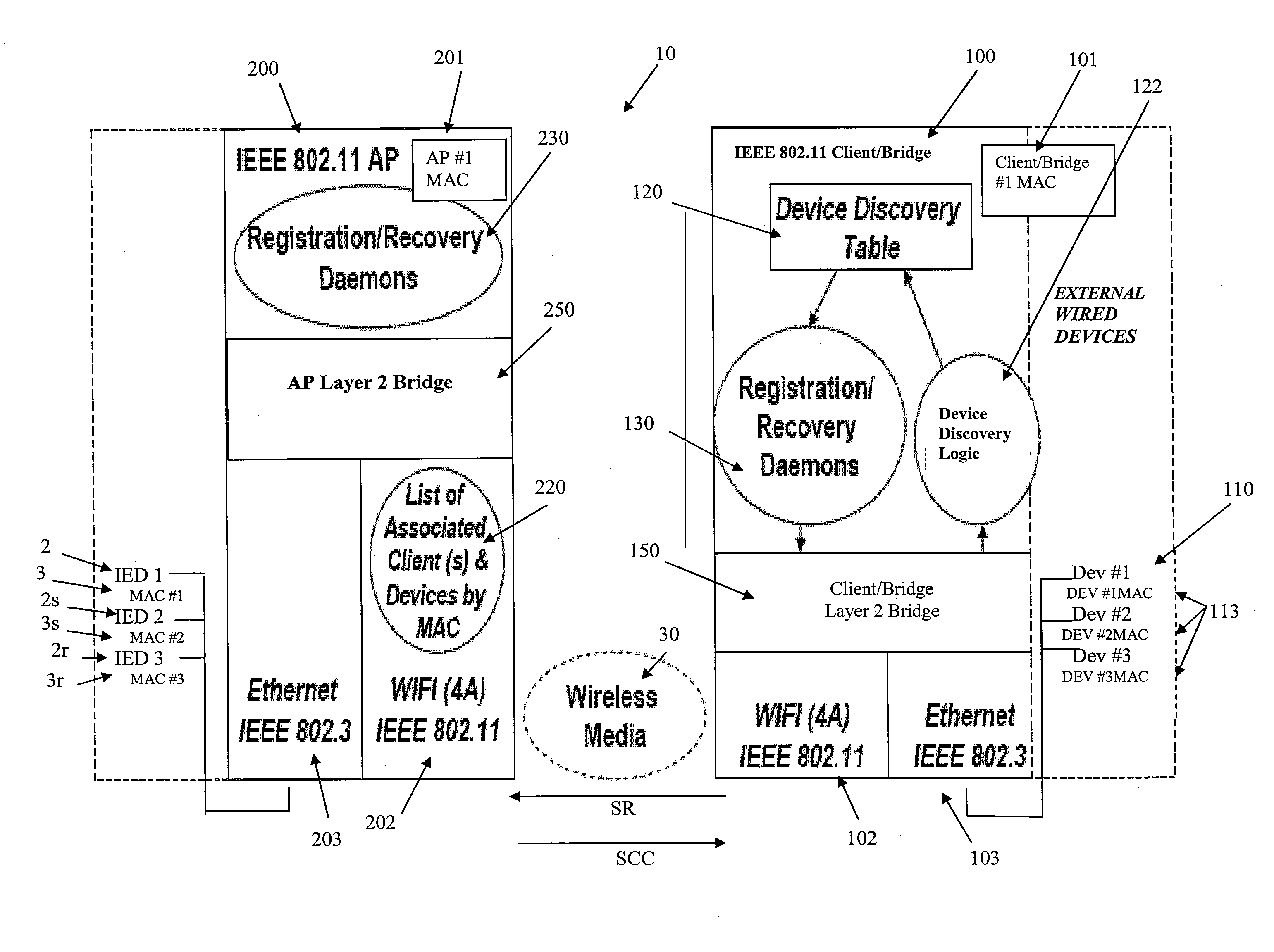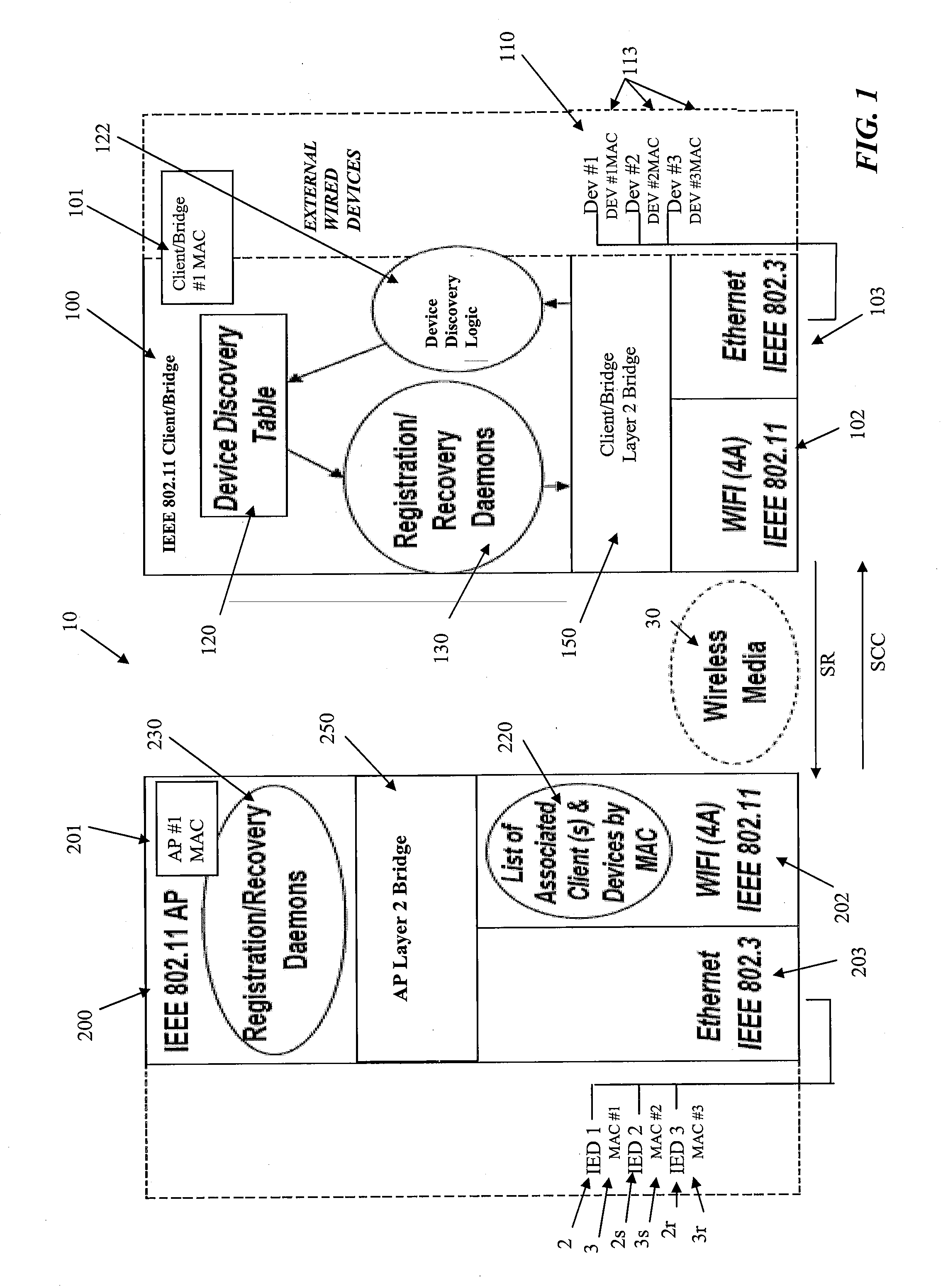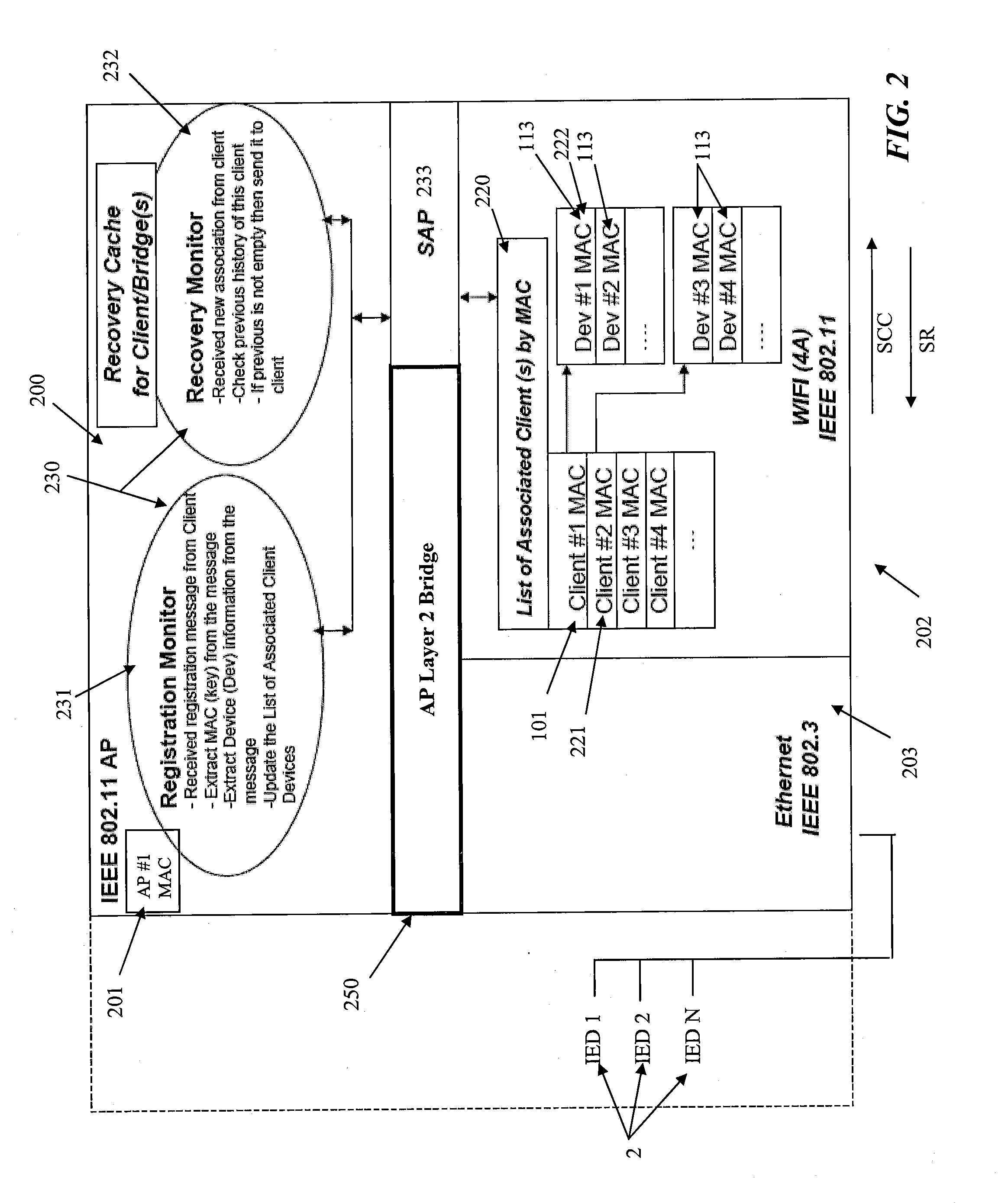Client/Bridge and Method and System for Using Same
a client and bridge technology, applied in the field of client/bridge and method and, can solve the problems of reducing the efficiency of the system, slowed down, and increasing the cost of the overall network, so as to facilitate layer 2 bridging, facilitate synchronization and maintenance of layer 2 forwarding fabric consistency, and facilitate communication
- Summary
- Abstract
- Description
- Claims
- Application Information
AI Technical Summary
Benefits of technology
Problems solved by technology
Method used
Image
Examples
Embodiment Construction
[0028]The present invention enables the implementation of Layer 2 bridging within IEEE 802.11 infrastructure Point-to-Point (P2P) and Point-to-Multipoint (P2MP) network topologies by utilizing the 4 address modes of a wireless interface, such as the IEEE 802.11 infrastructure, while keeping the Layer 2 information synchronized and simultaneously maintaining the Layer 2 forwarding fabric consistency within the overall network topology including wired and wireless components of the network. As a result, the IEEE 802.11 infrastructure mode forms a 2-hop instead of a single-hop Layer 2 wireless carrier network permitting Intelligent Electronic Devices (IEDs) in the network to address two or more IEDs connected behind a Client / Bridge device through a wired connection. Wired End-Point (terminal) devices, such as IEDs including Remote Terminal Units (RTUs) or Personal Computers (PCs) which are directly or indirectly connected to either the Client / Bridge or the AP side of this IEEE 802.11 w...
PUM
 Login to View More
Login to View More Abstract
Description
Claims
Application Information
 Login to View More
Login to View More - R&D
- Intellectual Property
- Life Sciences
- Materials
- Tech Scout
- Unparalleled Data Quality
- Higher Quality Content
- 60% Fewer Hallucinations
Browse by: Latest US Patents, China's latest patents, Technical Efficacy Thesaurus, Application Domain, Technology Topic, Popular Technical Reports.
© 2025 PatSnap. All rights reserved.Legal|Privacy policy|Modern Slavery Act Transparency Statement|Sitemap|About US| Contact US: help@patsnap.com



